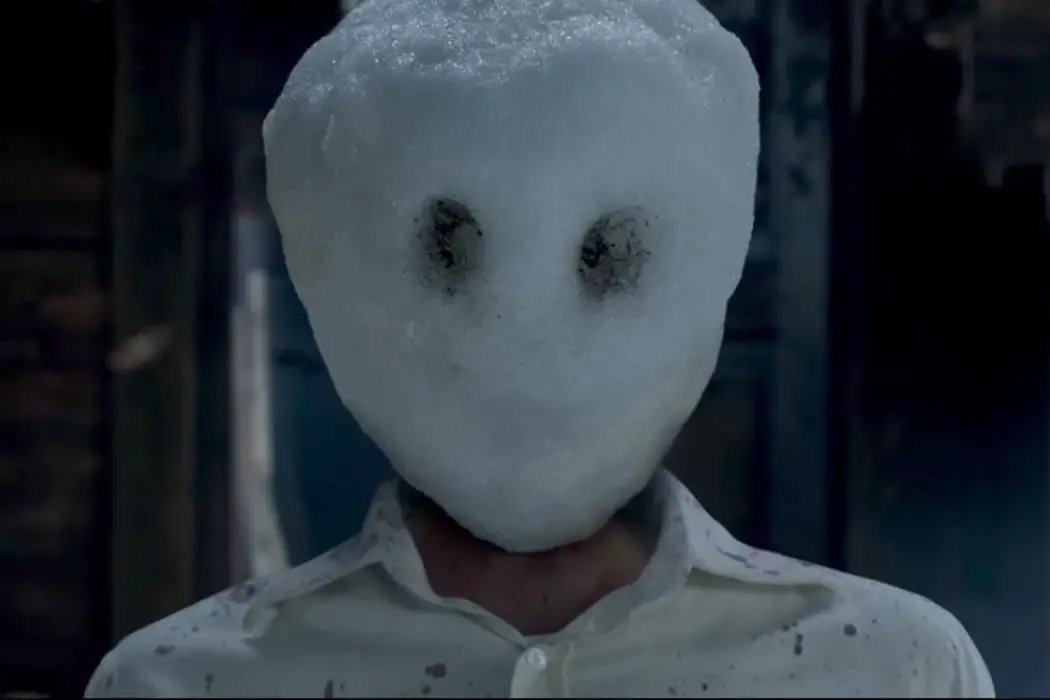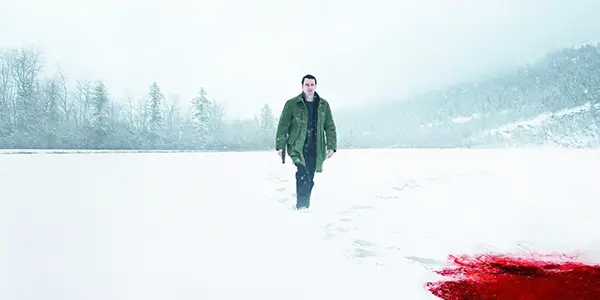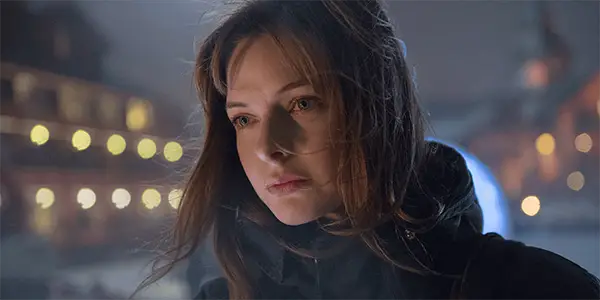THE SNOWMAN: A Frigid & Dreary Film-Watching Experience

David is a film aficionado from Colchester, Connecticut. He enjoys…
From the initial synopsis of The Snowman, it would be easy to write it off as a silly concept for a crime thriller: a serial killer who leaves a trademark snowman at the site of each killing. Just consider the idea of a madman, after engaging in a brutal slaying, who would take the time to then gently roll up balls of snow into the shape of a person, complete with carrot nose, small pebble eyes and smiling mouth, and extended twigs for arms. Such an act is more commonly associated with children, and would appear to take you out of the grim reality of what is taking place.
Yet, it’s this very juxtaposition that makes Jo Nesbø‘s chilling novel work. He takes the children’s concept and turns it on its head, even from the very opening chapter, in which a boy wakes in the middle of the night to discover a mysterious snowman that has suddenly appeared outside his living room window. Far from comforting, the creature appears striking, menacing, and full of unquestionable malice, setting the tone for the story to come.
So, taking this concept and adapting it to the screen seemed ripe with potential. Especially when you consider that director Tomas Alfredson, known for J.K. Simmons. So where exactly did it go wrong? Let’s get into it.
Lost in Translation
Though a crime mystery, The Snowman is also about detective Harry Hole (Fassbender). A police detective with the skills of Sherlock Holmes, Hole is renowned for his crime-solving abilities in addition to his more infamous traits, such as his crippling alcoholism and his abstaining from normal human interactions.
At the start of The Snowman, desperate for a new case, Hole soon learns of a woman that has been reported missing. Upon visiting the site, he sees nothing out of the ordinary, save an appalling snowman lurking outside the victim’s house. Tying it together with a threatening note he had recently received that used a snowman as a signature, and with the help of novice detective Katrine Bratt (Rebecca Ferguson), he soon starts to put the pieces together to find a killer on the loose.

Putting the pieces together, though, is using the phrase loosely. For this film, as even stated by Alfredson, who stated that 10-15% of The Snowman was neglected in the shooting production, is an indecipherable mess. The end result appears as if you took the intricate puzzles of the novel, extracted snippets of it at random, and then haphazardly smudged it all together into a full-length feature. Not even seasoned editor Thelma Schoonmaker, most known for her collaborations with Martin Scorsese, could stitch The Snowman into a coherent film.
The film also struggles with focus. It desperately tries to make you think one person is the killer, in a way that makes it obvious that it couldn’t clearly be them. And then in later scenes it inserts “clues” in a disorderly manner, never fully tying these into the larger mystery. Basically, once the person behind the murders is finally revealed, it makes all the previous buildup, which now barely relates, seem pointless. As the character Hole even says at one point, in a line that is representative of the film as a whole: “you can’t make the pieces fit.”
Cold Landscape
Instead of attempting to fill in its many gaps, the film transitions from one overhead-landscape shot setting to the next. And, to be fair, there is a lot to admire about these shots individually. Filmed almost entirely in Norway where the book itself takes place, the film’s cinematographer Dion Beebe utilizes the best of the stark white, silent landscape, showing the vast emptiness of the mountains and lakes as a seeming contrast to the grisly murders taking place in the city. Marco Baltrami’s stirring score also helps during these transitional moments, raising the tension for what’s to come.

But what comes is, as mentioned, typically a disappointment. Alfredson‘s films are typically known for being more subdued, stylistic pieces, especially Let the Right One In, which subject-wise is much closer to The Snowman than Tinker Tailor Soldier Spy. It’s a trademark that could have lent itself perfectly to the current subject matter, especially if coupled with Nesbø‘s knack for detail in his writing. But instead of allowing the tone and tension to build organically, such as in the scenes leading up to a murder, instead we’re left with a bare minimum of a buildup before choppily cutting to the aftermath. So, when seeing what should be a gruesome sight, for example, of a woman’s head perched atop a snowman, instead these scares feel unearned and out of place.
Stale and Underwritten Characters
What doesn’t help matters is the fact that nearly every character within The Snowman is expendable. Not only literally, in the case of those that are murdered, but considering the vast array of characters utilized. Michael Fassbender‘s Harry Hole is likely one of the more bland characterizations of the Sherlock Holmes archetype that I have yet to see. He’s set up from the start as a man blessed yet also burdened by his gift of insight, which leads to binge-drinking when not hot on the heels of a new case.
Yet, that’s about all we get as far as who he is. More is said about who the character is than is actually seen, making him more one-note than he ought to be. Hints are given at his darker side, such as during one minimally-lit scene with the character Katrine Bratt or a few conversations with Hole’s ex-wife Rakel, but the deeper understanding of his motives and his drive as a detective are never really delved into. It’s hard to blame Fassbender for this, who does seem to try with what he’s given, but unfortunately it’s nay impossible to bring forth a fully-fleshed character from the film’s shoddy writing.

Additional characters, such as Val Kilmer‘s Gert Rafto, who mumbles and bumbles about during a couple awkwardly-spliced scenes, are introduced seemingly as a way to build a bigger picture, only to then be removed entirely. Outside of its central story, perhaps the biggest mystery to The Snowman is just what they were trying to do with Kilmer‘s role.
The only potential standout role here is that of Rebecca Ferguson‘s Katrine Bratt. Though underused as a whole, she does get a few moments to express more emotion than the rest of the cast, showing a deep-rooted motivation for trying to catch the Snowman killer. Unfortunately, the issues which plague The Snowman as a whole are likely to overshadow anything about her performance that worked.
The Snowman: Conclusion
Such is the grand sum of The Snowman as a whole. It is so perplexing, bizarre, and scattershot, that even some praiseworthy aspects, such as the cinematography and some performances, are likely to be overlooked. And with such talent both in front of and behind the camera, it’s a shame that the film’s many narrative and structural problems weren’t addressed and properly adjusted before its release. As a result (last pun, I swear), The Snowman has left me very much out in the cold.
What did you think of The Snowman? What are some other films with potential that ended up being a mess?
The Snowman was released in the UK on October 13 and the US on October 20. For all international release dates, click here.
Does content like this matter to you?
Become a Member and support film journalism. Unlock access to all of Film Inquiry`s great articles. Join a community of like-minded readers who are passionate about cinema - get access to our private members Network, give back to independent filmmakers, and more.
David is a film aficionado from Colchester, Connecticut. He enjoys writing, reading, analyzing, and of course, watching movies. His favorite genres are westerns, crime dramas, horror, and sci-fis. He also enjoys binge-watching TV shows on Netflix.













